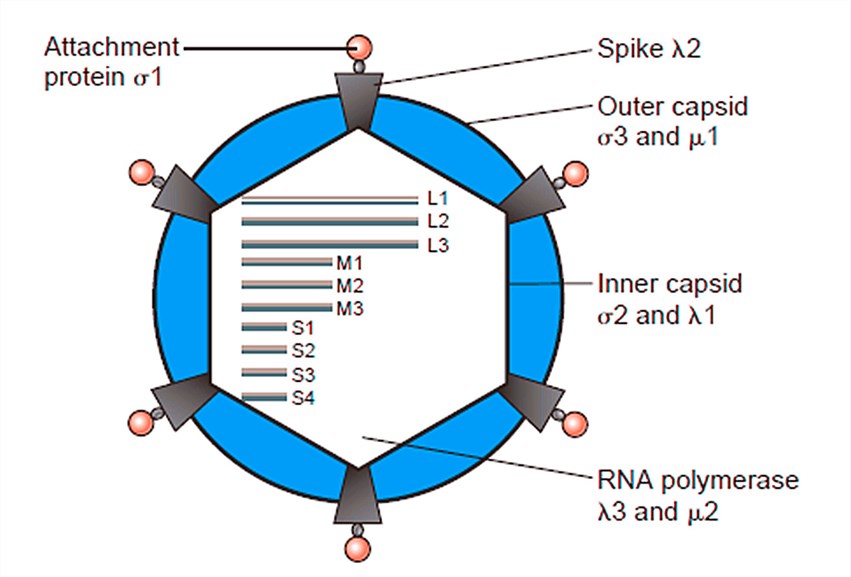Introduction of Orthoreovirus as Oncolytic Virus
Introduction to Orthoreovirus
Orthoreovirus, a member of the Reoviridae family, is a nonenveloped double-stranded RNA virus that is associated with many infectious diseases, like respiratory tract diseases and gastroenteritis, in humans. Orthoreovirus is composed of a capsid protein, a nucleoprotein domain, and several core proteins. Meanwhile, it also consists of 10 segments that have been identified in a range of species, including mammals and birds. Previous studies have demonstrated that all 10 segments play an important role in encoding small size-class viral proteins or gene products responsible for virus replication. Up to now, there are six strains of orthoreovirus, such as piscine orthoreovirus, reptilian orthoreovirus, avian orthoreovirus, baboon orthoreovirus, pteropine orthoreovirus, as well as mammalian orthoreovirus (mORV), have been isolated from different host cells. In general, they can infect a large number of species by the fecal-oral route and be widely spread around the world.
 Fig.1 Structural features of mammalian orthoreovirus (mORV). Distributed under CC BY-SA 4.0, from Wiki
Fig.1 Structural features of mammalian orthoreovirus (mORV). Distributed under CC BY-SA 4.0, from Wiki
Orthoreovirus as Oncolytic Virus in Disease Treatment
Over a decade, oncolytic viruses have become a tremendous evolution and broadly used for developing novel therapeutic agents against various diseases. Moreover, many kinds of viruses have been genetically modified as new generations of oncolytic viruses and used in preclinical and clinical trials. Orthoreovirus is a monomeric and segmented RNA virus and the main cause of mild flu-like respiratory symptoms in humans. Recent researchers have revealed that orthoreovirus can activate immune systems and trigger enough immune responses against various tumors cell without harming normal cells, suggesting it is an inherent oncolytic virus. As a result, a series of oncolytic virotherapy approaches based on orthoreovirus have been designed for treating a variety of cancer types. For example, an mORV subtype, type 3 Dearing (T3D), has been engineered for developing a new therapy for the treatment of cancers in mice models. The results have indicated that it has strong anti-tumor effects in both in vitro and in vivo studies.
Orthoreovirus as Oncolytic Virus in Clinical Trials
Orthoreovirus is a new class of oncolytic viruses that have been used in cancer virotherapy. Numerous clinical trials have been conducted to demonstrate the safety of orthoreovirus-based oncolytic virotherapy in patients with different types of cancers. Besides, orthoreovirus infection is capable of increasing the sensitivity of cancer cells to chemotherapy drugs or radiation therapy, making it potential in combination therapy. Therefore, many efforts have been made to develop orthoreovirus-based combination therapies to kill cancer cells. More than 15 phase III clinical trials combining orthoreovirus and immune checkpoint inhibitors have been established as a new combination therapy for treating human prostate cancer.
The combination therapy is relatively safe for patients without dose-limiting toxicities, and clinical oncolytic efficacy has been confirmed in these phase III clinical trials.
